NFL Photos | NFL Photography Gallery | NFL.com
From the Hall of Fame Archives: The 1940's All-Decade Team
See which greats, like Hall of Fame quarterback Bob Waterfield, helped forge the NFL ahead with this photographic look at the 1940's All-Decade Team.

Hall of Fame quarterback Bob Waterfield runs upfield in a 70 to 27 win over the Baltimore Colts on October 22, 1950 at Los Angeles Memorial Colesium. After a rookie season in 1945 that led him to become the first rookie ever to win the league's MVP title, Waterfield continued to captain the Ram's feared offense. He was named first- or second-team All-NFL five times. One of the game's most versatile players, he was also an ace defensive back for his first four seasons, a top punter with a 42.4 yard average, and a deadly place kicker. In eight seasons he totaled 573 points on 13 touchdowns, 315 PATs and 60 field goals. He led the National Football League in passing in 1946 and 1951, finishing with career totals of 814 completions, 11,849 yards gained and 97 touchdown passes. (Photo by Vic Stein/NFL)
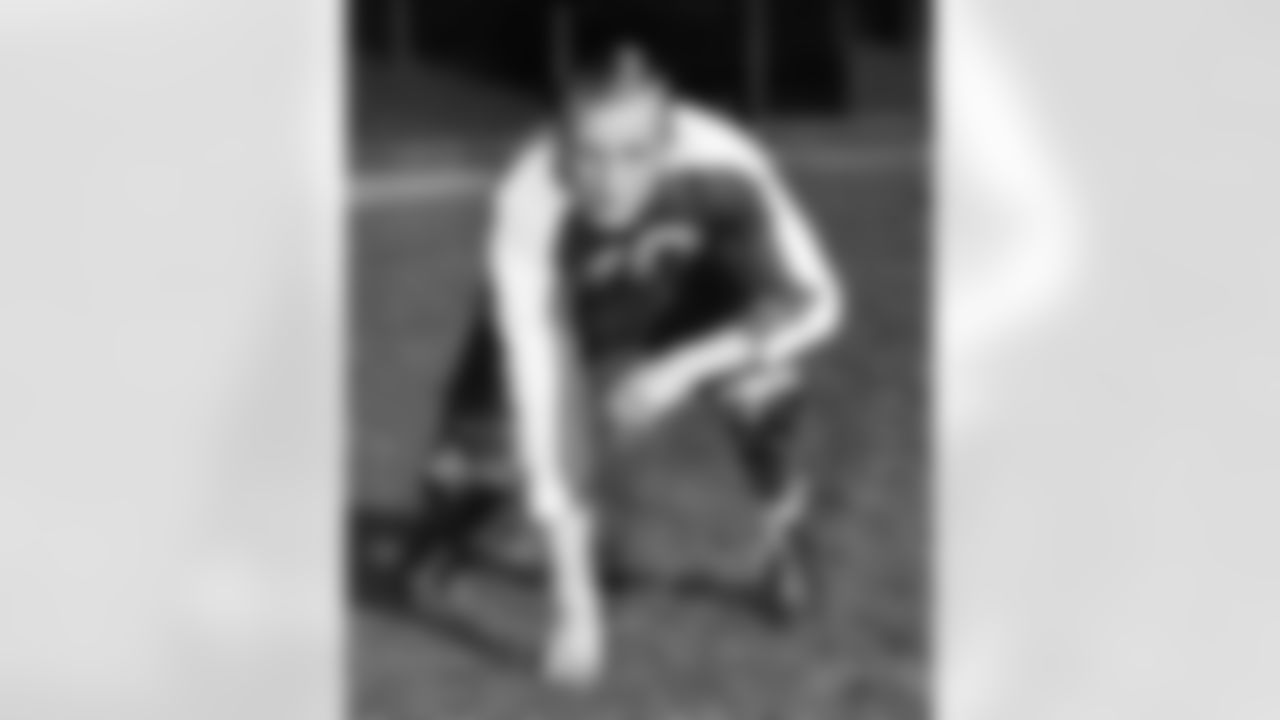
Offensive tackle Al Wistert of the Philadelphia Eagles, circa 1940's. He played his entire nine-year NFL career for the Eagles and became their team captain. He was named to play in the NFL's first Pro Bowl as an Eagle. During most of Wistert's career there were no football All-star games although he was named to the league All-Pro team eight times.(Photo by NFL/NFL)
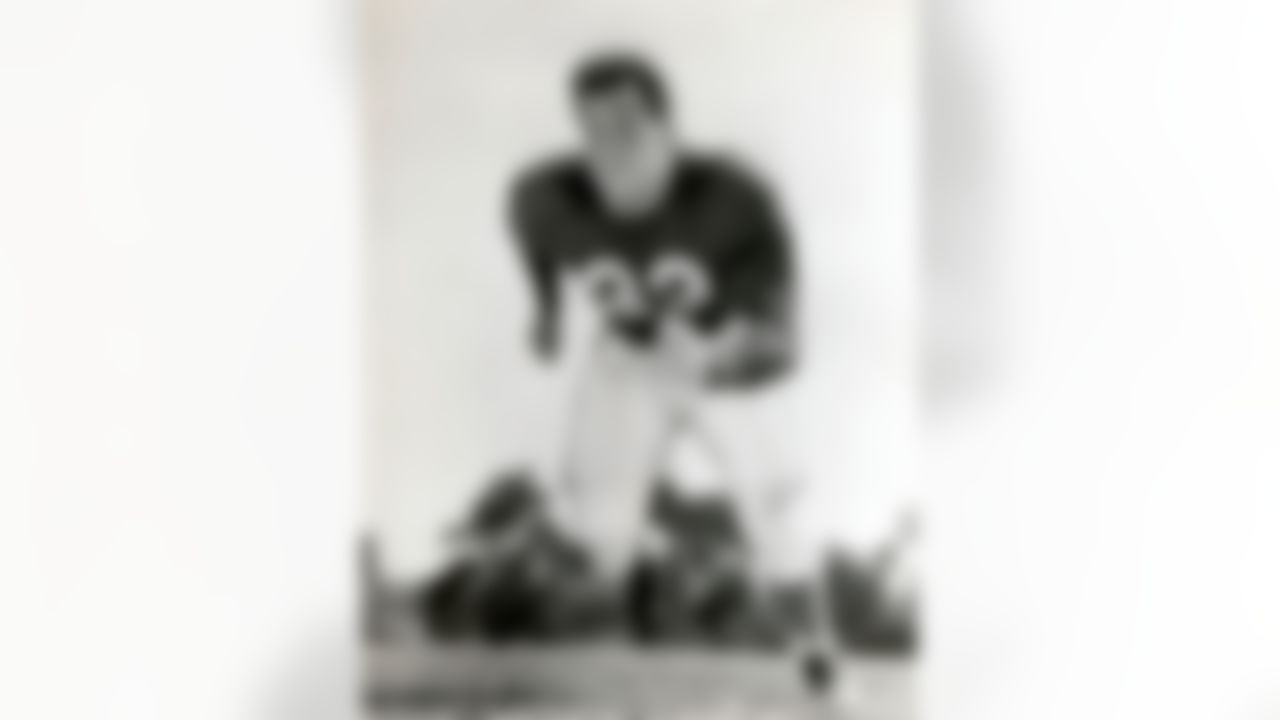
Bruno Banducci was born in Tassignano, Italy, but moved to the US for high school and college. He was elected into the Stanford University Football Hall of Fame and selected by the combined Philadelphia/Pittsburgh team in the 1943 Draft. He went on to play guard on the San Francisco 49ers for 9 years, playing a large role in the success of their running game with his effective blocking. (Photo by Pro Football Hall of Fame)

Hall of Fame halfback Bill Dudley was a first round draft pick of the Pittsburgh Steelers in 1942. Dudley played for 3 teams in his 9 year career. The 5-10, 182-pound halfback ran, passed, punted, and placekicked. He returned punts and kickoffs, caught passes, and was a deadly defender. The 1946 season with the Steelers was his League MVP campaign as he led the league in rushing, punt returns, interceptions, and lateral passes attempted. Never before had an NFL player led the league in four distinctly different statistical categories, and it�s not likely to happen again anytime soon. (Photo by Nate Fine/NFL)
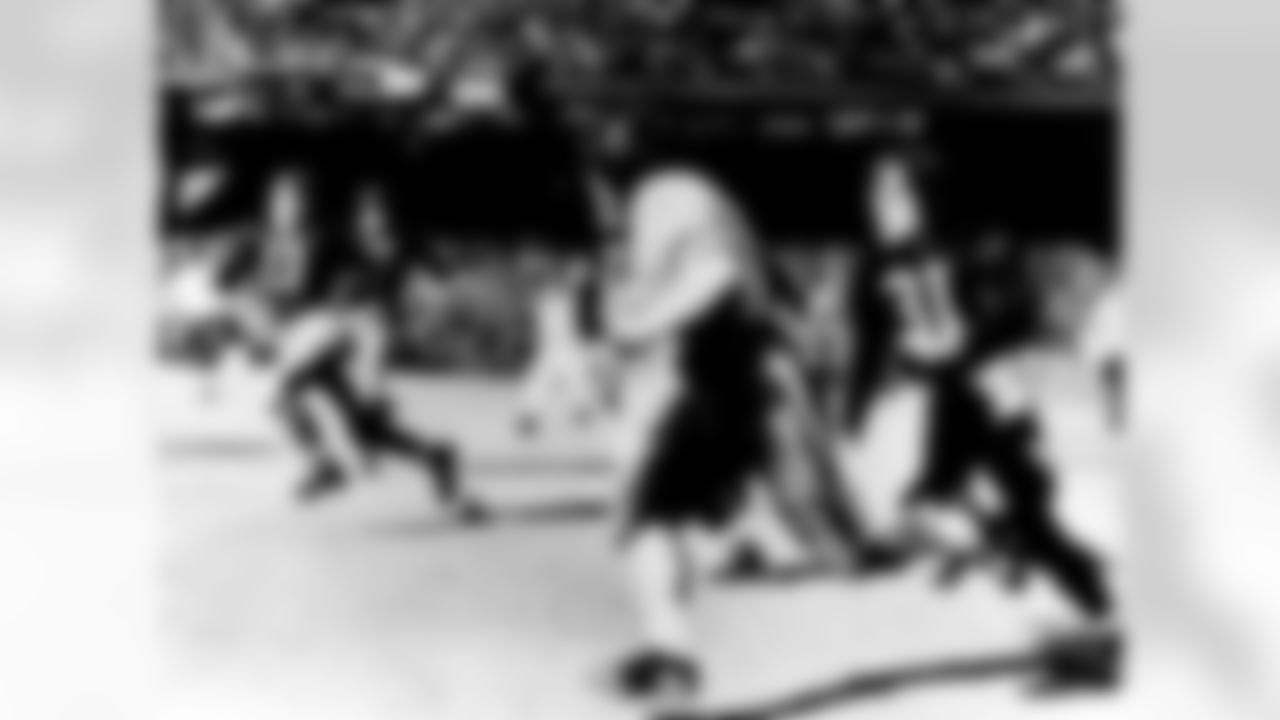
Fullback Bill Osmanski of the Chicago Bears runs upfield in a 73 to 0 victory over the Washington Redskins in the 1940 NFL Championship on December 8, 1940 at Griffith Stadium in Washington, D.C. Osmanski was drafted in the 1st round (6th pick overall) of the 1939 NFL Draft by the Chicago Bears. The pick paid immediate dividends for the Bears as Osmanski led the NFL in rushing in 1939 with 699 yards. (Photo by Pro Football Hall Of Fame/NFL)
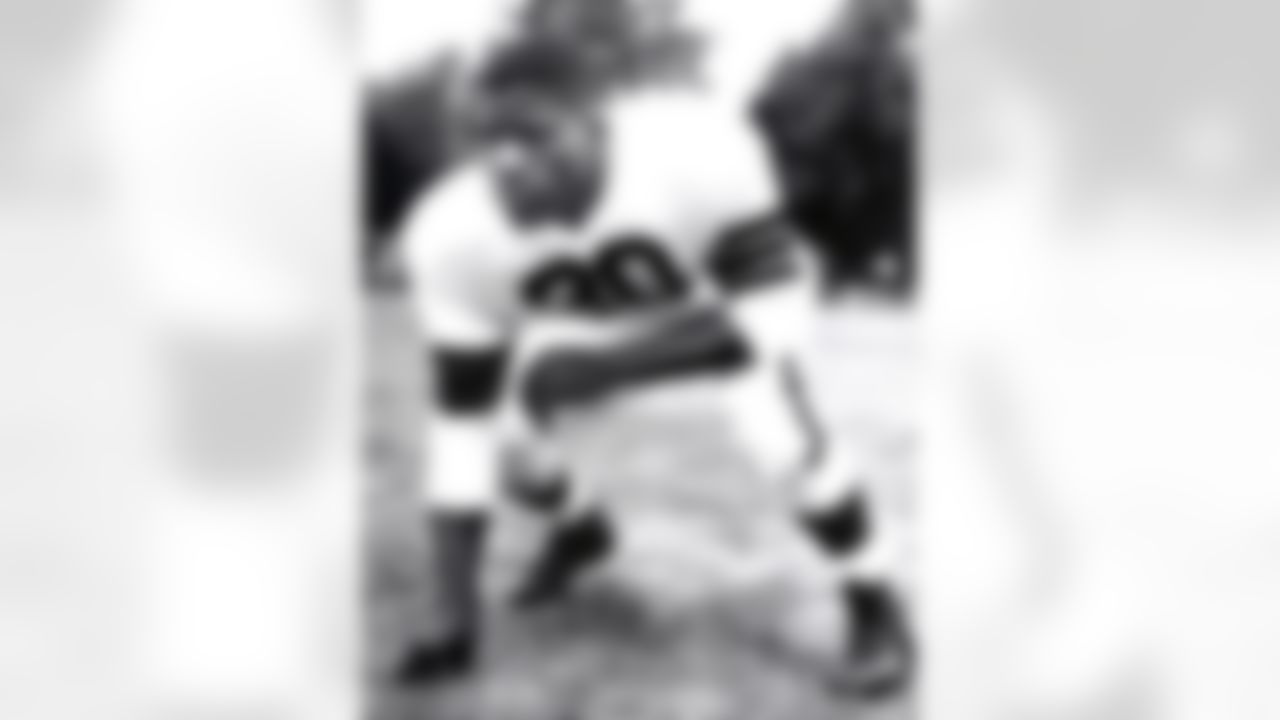
Bill Willis, at 6-2 and 210 pounds, was small by pro football standards in 1946, yet he performed in a class by himself, particularly on defense. In the eight years he played for the Cleveland Browns from 1946 through 1953, he was a first-team All-League selection seven times and a second-team choice once. He also played in three NFL Pro Bowls. It was Bill's touchdown-saving tackle in a playoff game against the New York Giants that enabled the Browns to continue their quest for the 1950 championship their first year in the NFL after four dominating seasons in the All-America Football Conference. (Photo by Pro Football Hall Of Fame/NFL)
» Video: Bill Willis retrospective
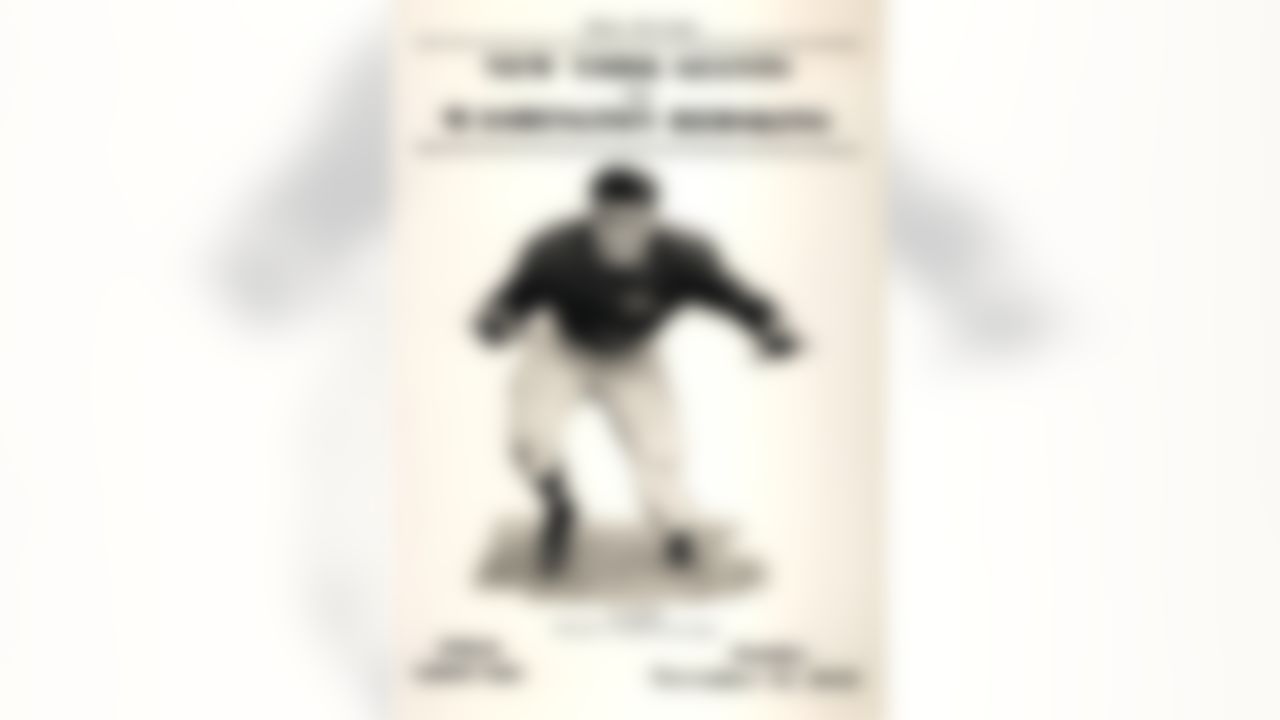
Al Blozis is featured on the program for a 1942 NFL game against the Redskins. He played offensive tackle for the Giants in 1942 and 1943 before entering the military. He was also able to play three games in 1944 while on furlough. During that time he was an outstanding performer, being chosen All-Pro, and given special acclaim for his ability to obliterate would-be kick returners in the open field. Blozis was killed in combat in France in 1945, and his number was retired by the Giants. (Pro Football Hall of Fame)
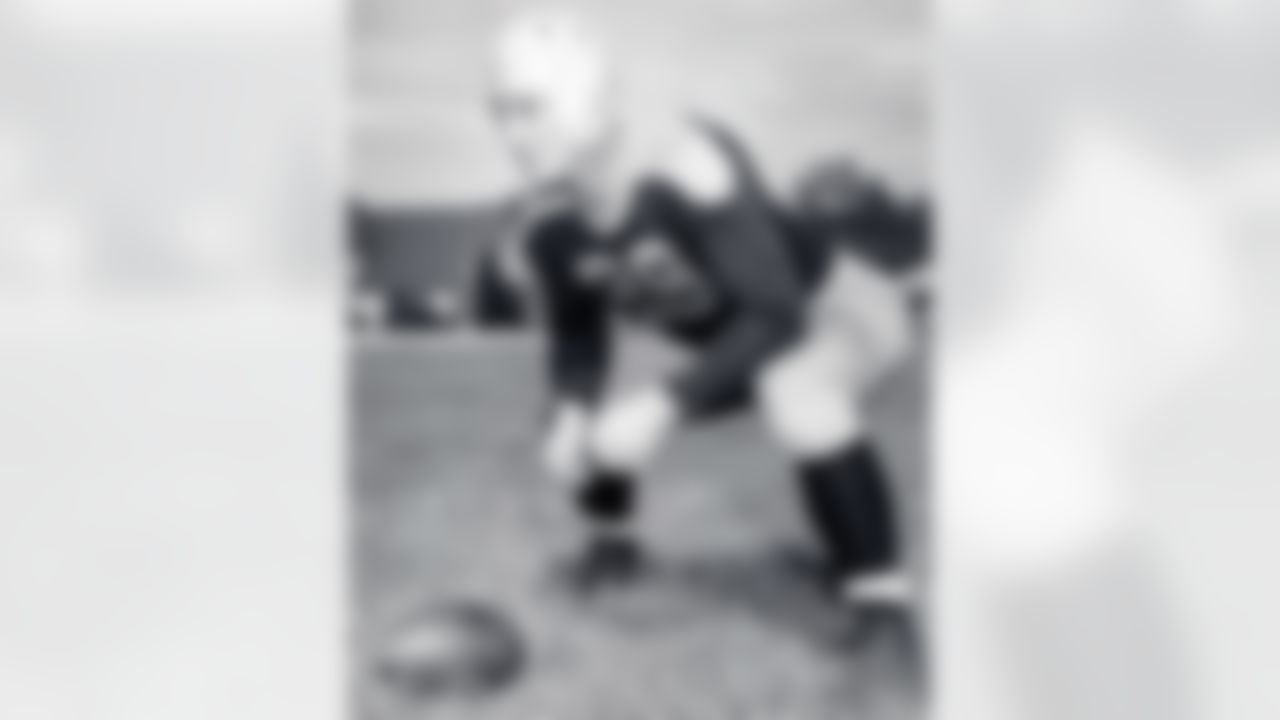
Charley Brock was drafted was the Green Bay Packers in the 3rd round (24th overall) of the 1939 Draft. He went on to play center and back for 9 seasons with the Packers, and was selected to the Pro Bowl 3 times and First Team All-Pro once. (Photo by Pro Football Hall of Fame)
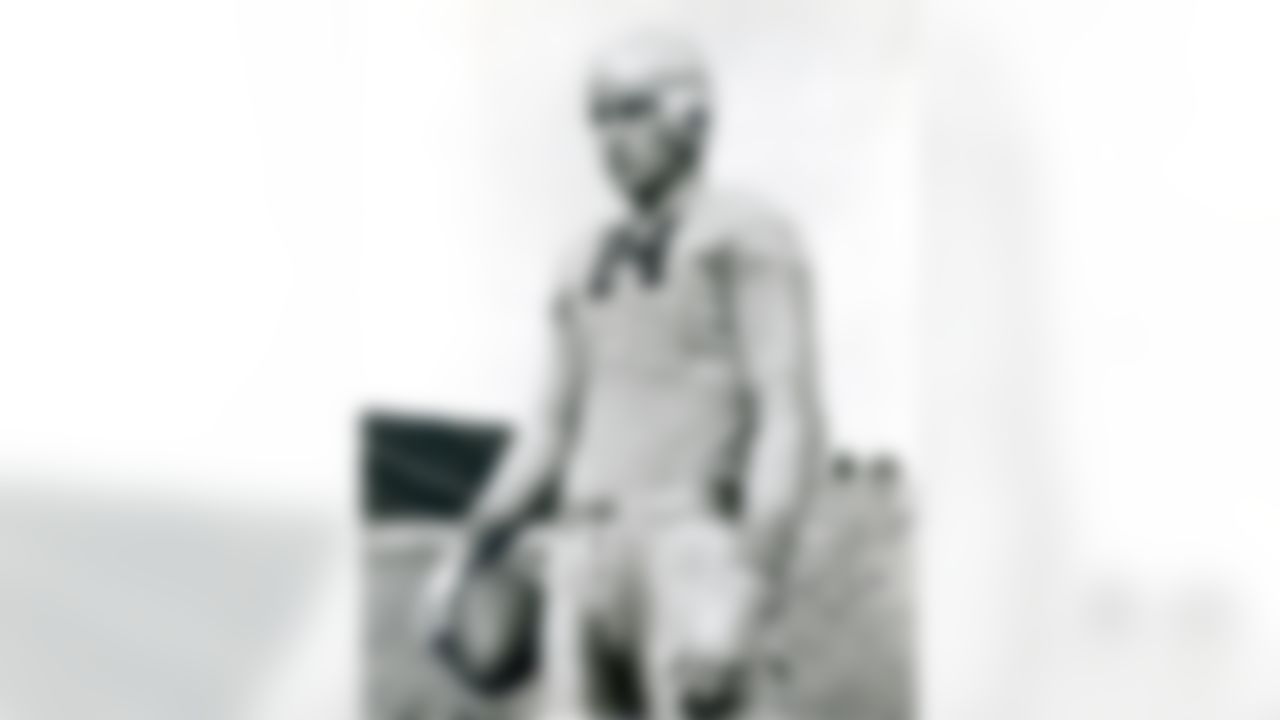
After graduation from the University of Colorado, Byron "Whizzer" White signed with the NFL's Pittsburgh Pirates (now Steelers), playing there during the 1938 season. He took 1939 off to study at Oxford as a Rhodes Scholar, but returned to play for the Detroit Lions from 1940-41. In three NFL seasons, he played in 33 games. He led the league in rushing yards in 1938 and 1940. His career was cut short when he entered the US Navy during World War II; after the war, he elected to attend law school rather than returning to football. He was elected to the College Football Hall of Fame in 1954 and went on to serve as an associate justice of the Supreme Court. (Photo by Pro Football Hall Of Fame/NFL)
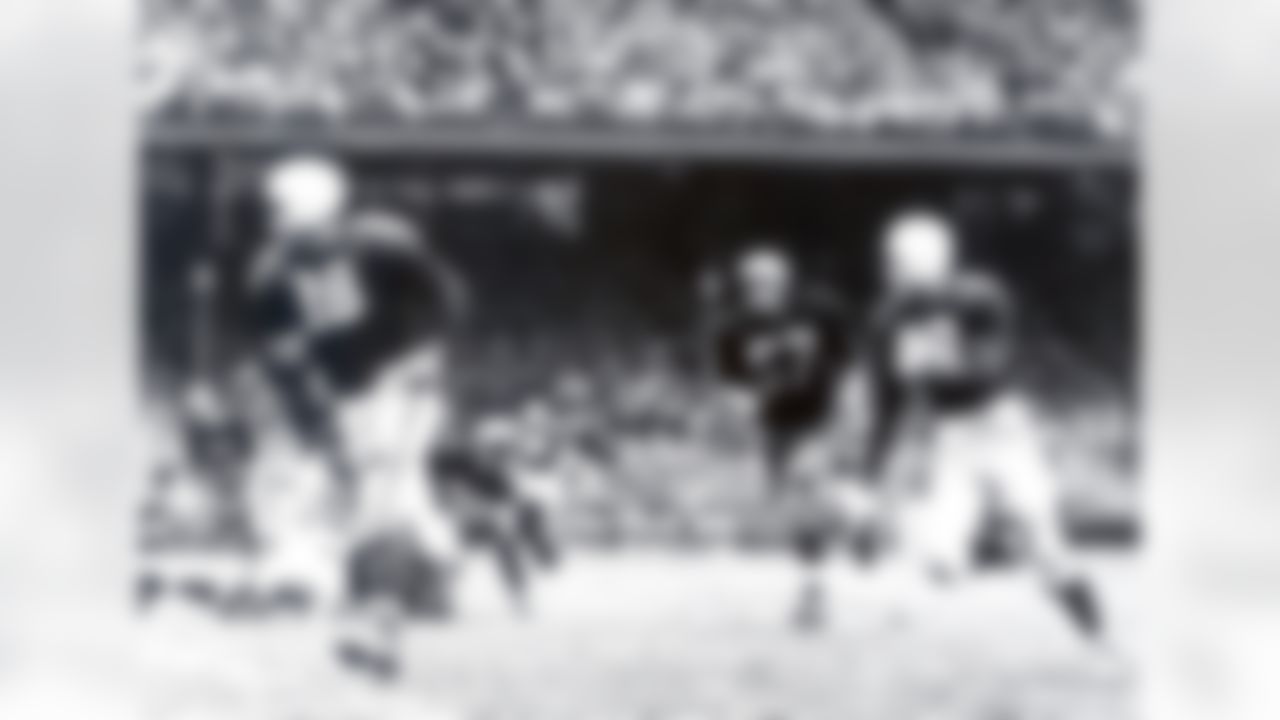
Charley Trippi of the Chicago Cardinals was signed to a staggering $100,000, 4-year contract in 1946, causing a breakthrough in the war between the NFL and AAFC. In the 1947 NFL Championship Game, when the Cardinals defeated the Philadelphia Eagles, 28-21, Trippi wore basketball shoes for better traction on the icy field and totaled 206 yards, including 102 yards on two punt returns. He scored touchdowns on a 44-yard run and a 75-yard punt return. Trippi could and would do anything on a football field. He played as a left halfback for four seasons before switching to quarterback for two years. He then moved back to offensive halfback for one campaign before changing almost exclusively to the defensive unit in 1954 and 1955. He also was the Cardinals' punter and he excelled on the punt and kickoff return teams. (Photo by Pro Football Hall Of Fame/NFL)
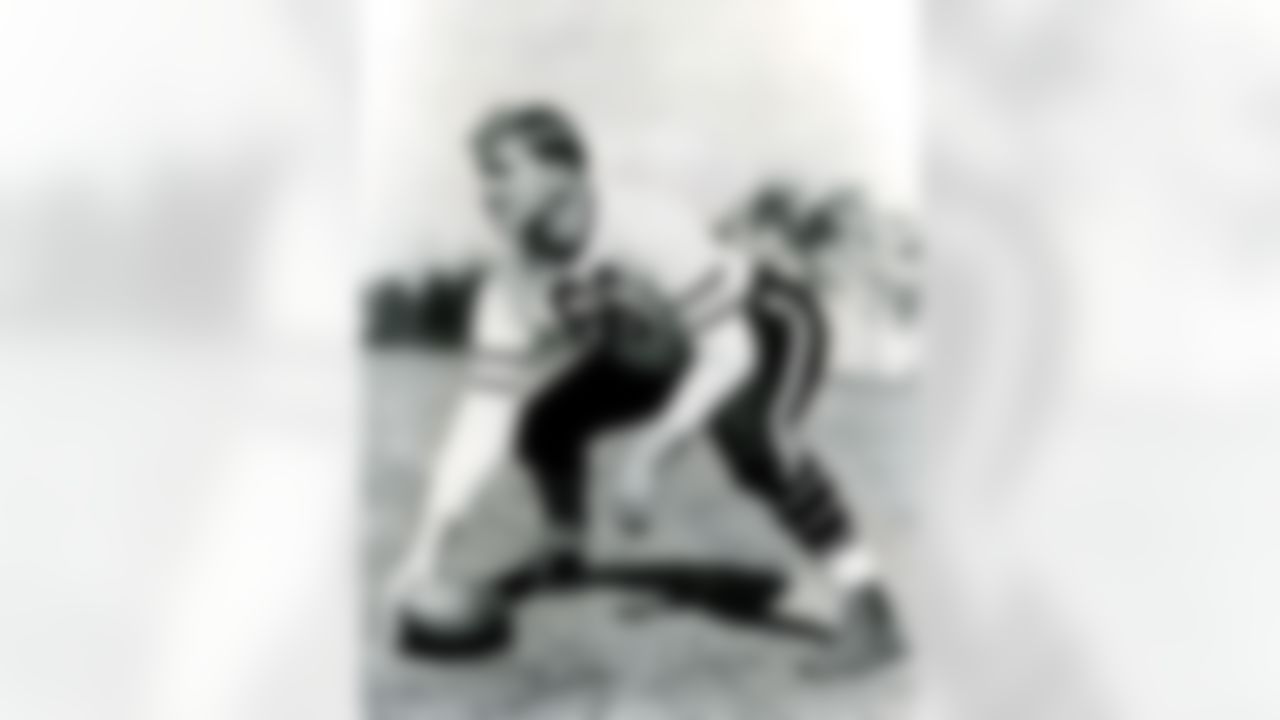
Hall of fame center Clyde " Bulldog " Turner of the Chicago Bears in his rookie season in 1940. As a linebacker who was blessed with halfback speed, Turner, in 1942, led the league in interceptions with eight. On offense, he was a flawless snapper and an exceptional blocker who could also play guard or tackle. Never was his versatility more evident than in 1944 when he was asked to fill in as a ball carrier in an emergency situation. He consistently ground out long gains, including a 48-yard touchdown romp. (Photo by Pro Football Hall Of Fame/NFL)

During his eight-year career (1948-1955) with the Bears, George Connor was named to the All-NFL team at three different positions - offensive tackle, defensive tackle, and linebacker. In 1952 and 1953, he was named all-league on both the offensive and defensive teams by different wire services. He seemingly instinctively knew about keys - the tips that the movements of certain offensive players will provide to the alert defender as to which way the play if going - long before keys became the vogue. (Photo by Pro Football Hall of Fame)
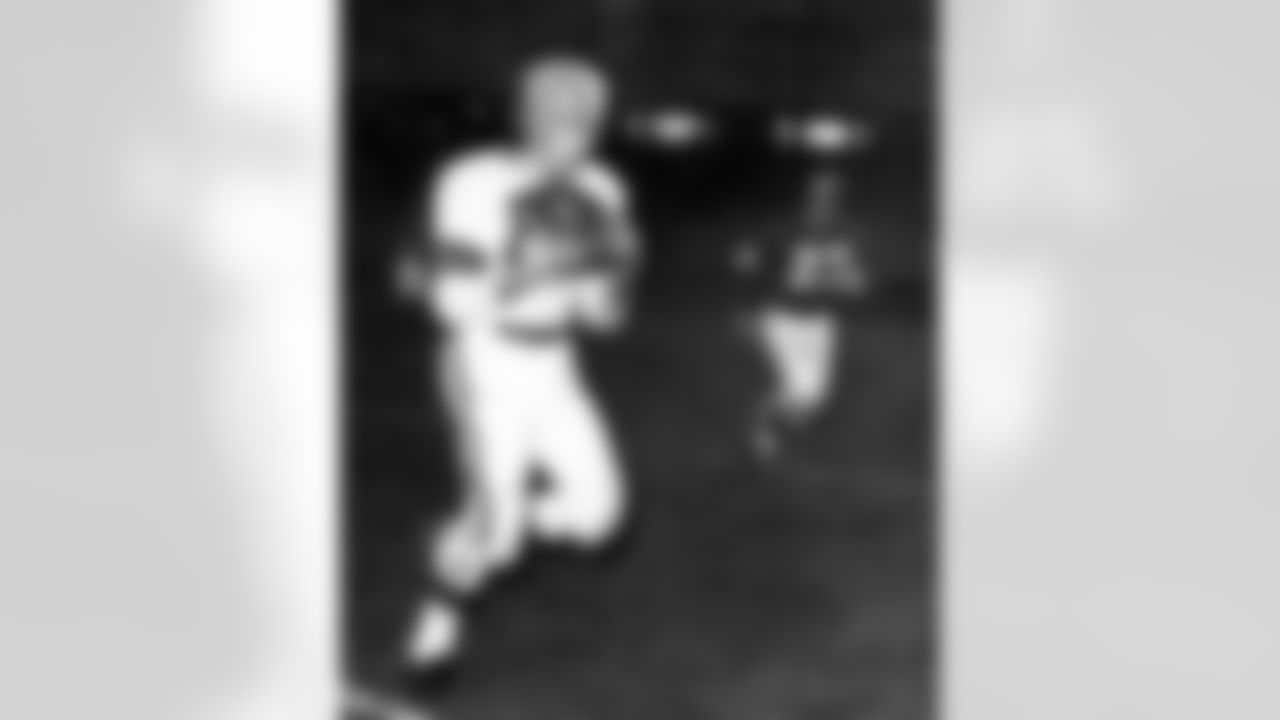
Hall of Fame wide receiver Dante Lavelli of the Cleveland Browns makes a catch and chased by Rex Berry in a 23 to 21 win over the San Francisco 49ers. To make the Browns after a long stint in the U. S. Army had limited his college experience to just three games, he had to beat out four more experienced and highly regarded candidates. But Dante not only prevailed, he led the league in receptions and won All-AAFC honors in his rookie season. He also caught the winning touchdown pass in the first AAFC championship game between the Browns and the New York Yankees. (Photo by Pro Football Hall Of Fame/NFL)
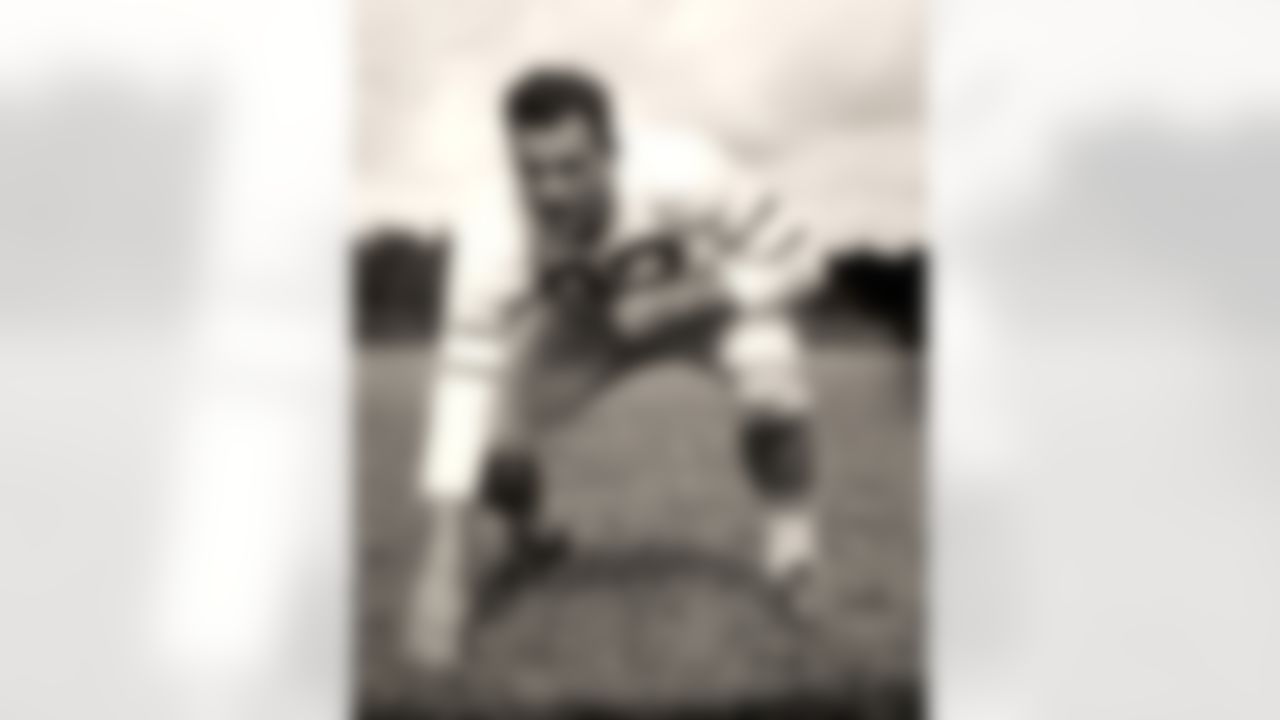
Jack Ferrante dropped out of high school in his sophomore year and began working in Philadelphia supermarkets. He began playing pro football in local leagues in 1934, initially getting $7 per game. He gained a tryout with the Eagles in 1939, and was signed by their farm team, the Wilmington Clippers. After another tryout, he played end in three games for the Eagles in 1941, but was sent back to Wilmington until making the Philadelphia roster for good in 1944. He was a member of the Eagles' championship teams in 1948 and 1949. (Photo by Pro Football Hall of Fame)

Chicago Bear Hall of Fame running back/defensive back George McAfee takes a handoff from Hall of Fame quarterback Sid Luckman in a 1940s file photo. In his first exhibition game, McAfee returned a punt 75 yards for a touchdown with just seconds remaining to defeat the Brooklyn Dodgers. In the 1940 regular-season opener, he ran back a kickoff 93 yards and threw a touchdown pass in a 41-10 Bears victory over arch-rival Green Bay. In the historic 73-0 rout of the Washington Redskins in the 1940 NFL Championship Game, McAfee contributed a 35-yard interception return for a touchdown. (Photo by NFL/NFL)
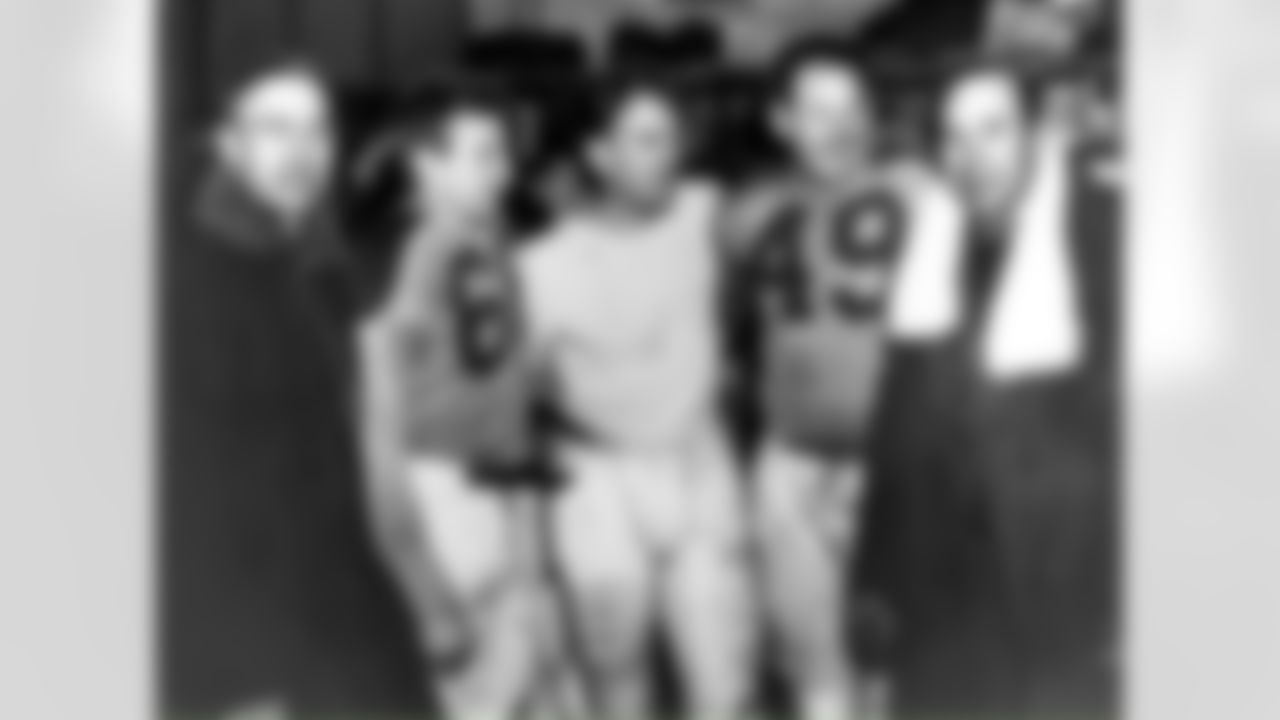
The 11th overall pick in the 1938 Draft, Jim Benton began his career with the Cleveland Rams. He spent the 1943 season with the Chicago Bears before returning to the Rams where he would stay through their move to Los Angeles in 1946. Shown here, Cleveland Rams head coach Adam Walsh, running back Donald Greenwood, quarterback Bob Waterfield, end Jim Benton, and backfield coach Bob Synder assemble in the lockerroom to celebrate a 15-14 win over the Washington Redskins in a NFL Championship Game on December 16, 1945 at Cleveland Municipal Stadium in Cleveland, Ohio. (Photo by Pro Football Hall Of Fame/NFL)
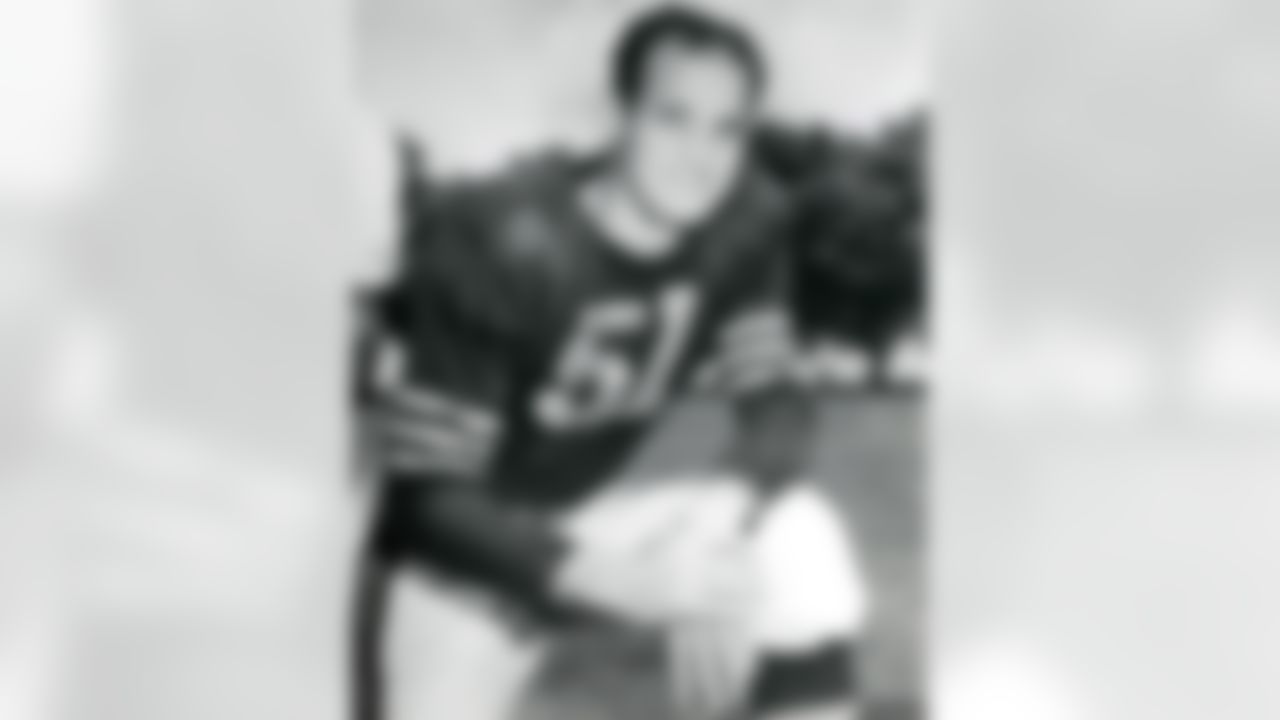
After a Hall of Fame college career at LSU, Ken Kavanaugh played for the Chicago Bears. His career was interrupted by World War II where he was a pilot in the European theater. He flew 30 missions and was awarded the Distinguished Flying Cross and the Air Medal with four oak leaf clusters. After the war, he continued his career with the Bears. Kavanaugh spent a total of eight seasons in Chicago, setting team records for most single-season touchdown receptions, and highest average gain, for both career and season. (Photo by Pro Football Hall Of Fame/NFL)
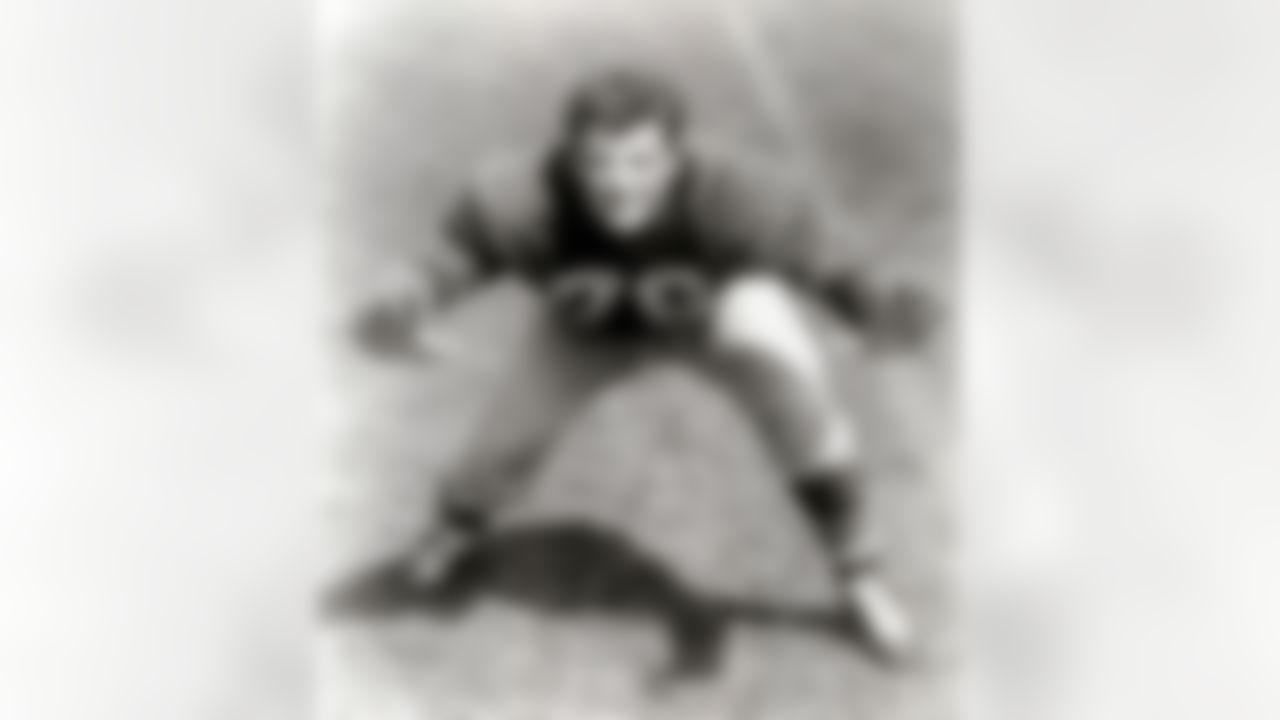
When positioned at both offensive guard and then middle guard, on defense, Frank "Bucko" Kilroy played notoriously rough down in the trenches from 1943-55 for the Philadelphia Eagles. Kilroy and the Eagles captured back-to-back NFL Championships in 1948 and 1949. The Eagles won both championship games in shutouts, due in no small part to Kilroy, defeating Chicago 7-0 during a blinding snowstorm in 1948 and Los Angeles 14-0 on a rain-soaked field the following season. (Photo by Pro Football Hall of Fame)
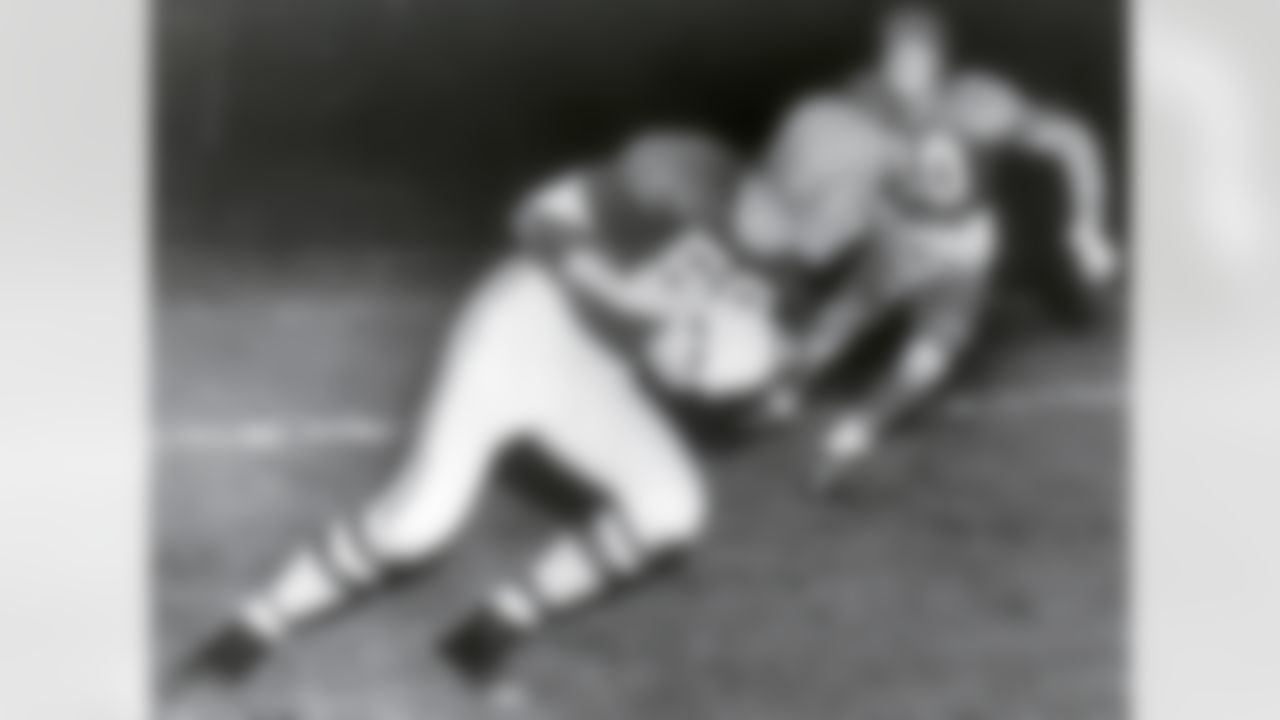
PHILADELPHIA, PA - SEPTEMBER 16: Wide receiver Mac Speedie #58 the Cleveland Browns gathers in a reception against the Philadelphia Eagles. The Browns defeated the NFL champion Eagles 35-10 in the first game of the merger between the AAFC and the NFL. In each of the four seasons of the AAFC's existence, the Browns captured the championship, with Speedie being on the receiving end of 211 passes for over 3,500 yards and 24 touchdowns. From 1947 to 1949, Speedie led the league in receiving, with arguably his most spectacular scoring effort coming on November 2, 1947. Catching Otto Graham's pass from the Browns' one-yard line, Speedie scored on a 99-yard pass play. (Photo by Pro Football Hall Of Fame/NFL Photos)

Fullback Marion Motley of the Cleveland Browns prepares for contact in a 28 to 56 loss to the San Francisco 49ers on Oct. 9, 1949 at Kezar Stadium in San Francisco, California. Motley was the AAFC's all-time rushing leader and also led the NFL in ground gaining in his initial season in the league in 1950. That year, in a game against the Pittsburgh Steelers, the powerful Motley rushed for 188 yards on just 11 carries for a 17.1 yards-per-carry average. In his nine professional seasons, he amassed 4,720 yards on 828 carries for an amazing 5.7 yards-per-carry average. (Photo by Frank Rippon/NFL)
» Video: Marion Motley retrospective
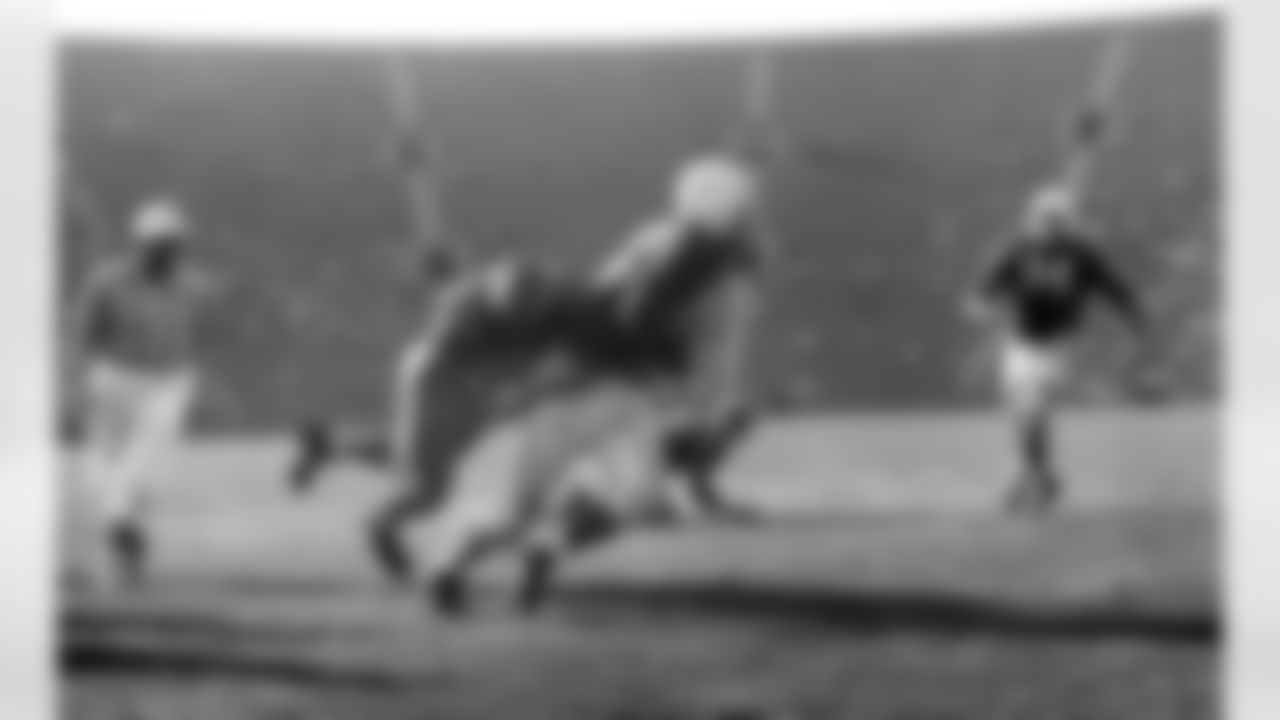
Pat Harder (34) of the Chicago Cardinals supports teammate Charley Trippi in a 27 to 22 win over the Los Angeles Rams on October 31, 1948 at Los Angeles Memorial Colesium. Harder was drafted 2nd overall in the 1944 NFL Draft by the Chicago (now Arizona) Cardinals. Harder was part of the Cardinals' "Million-Dollar Backfield" which also included quarterback Paul Christman and halfback Trippi. He was the first player in league history to score over 100 points in three consecutive years, which he did from 1947-1949, leading the league all three years. (Photo by Vic Stein/NFL)
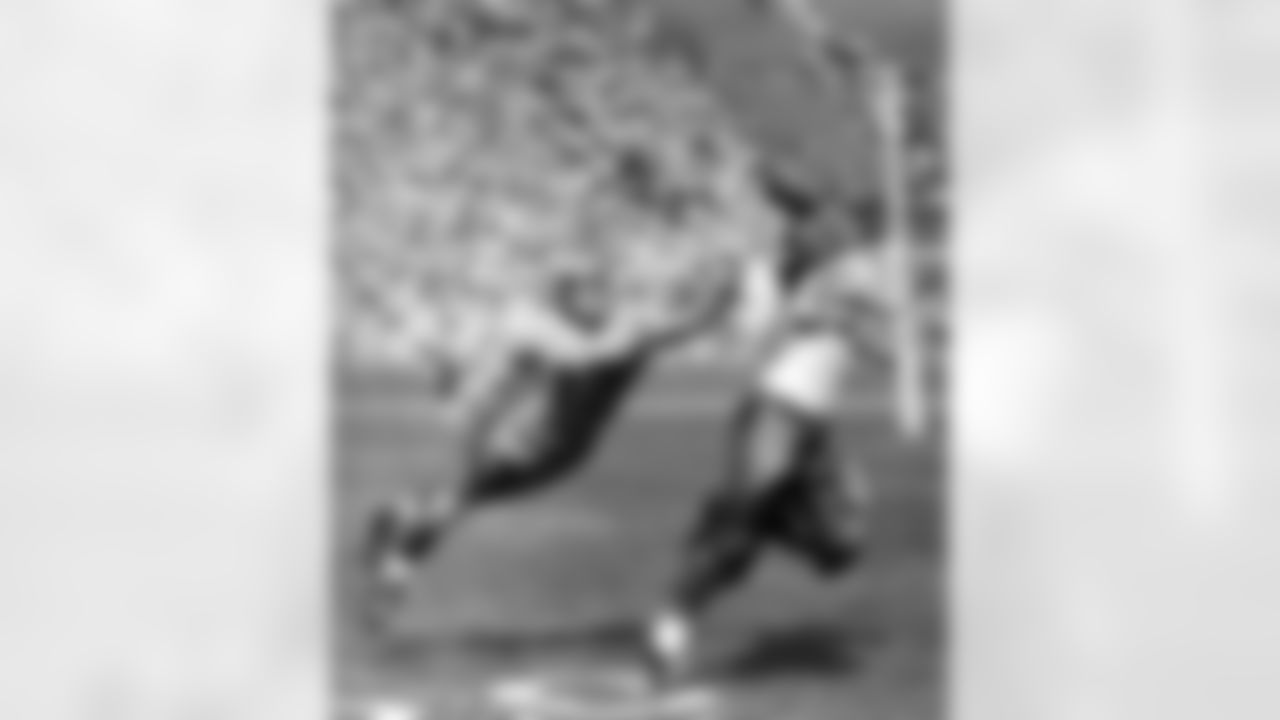
Wide receiver Pete Pihos (35) of the Philadelphia Eagles grabs a catch over Les Horvath of the Los Angeles Rams. Immediately after Pete joined the Eagles, the team marched to its first divisional championship. In the playoff game against the Pittsburgh Steelers for the Eastern Division crown, he blocked a punt to set up the first touchdown in the Eagles 21-0 win. Philadelphia won three straight divisional championships and then back-to-back NFL titles by shutout scores. (Photo by Vic Stein/NFL)
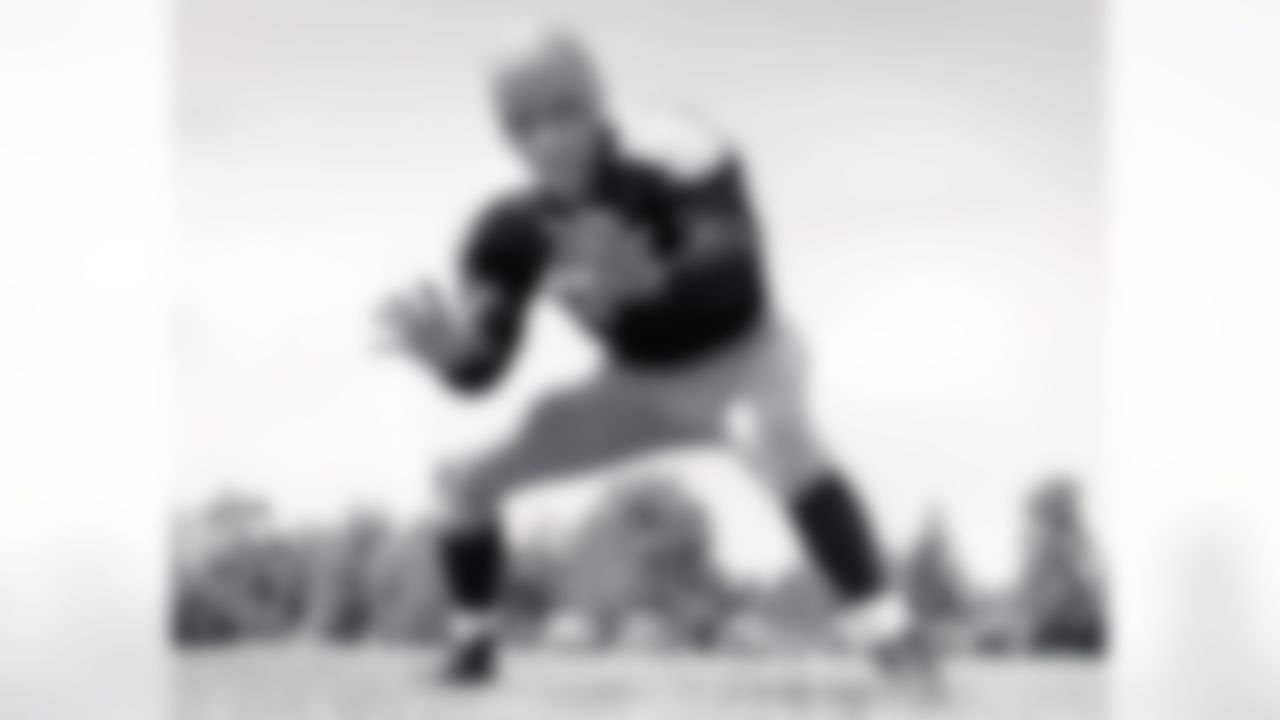
A free agent from Vanderbilt in 1938, Buford Baby Ray was a dominating blocker and defensive tackle. The 6'6" Baby Ray was a giant of a lineman in his time. He weighed more than 280 pounds in college but dropped 30 pounds in his first season in Green Bay. Ray played 11 seasons, from 1938-'48. He was a member of two Packer championship teams. Ray became a long-time Packer scout after his retirement and was inducted into the Packer's Hall of Fame. (Photo by Pro Football Hall of Fame)

Washington Redskins Hall of Fame quarterback Sammy Baugh in 1940. When Baugh first started with the Redskins, pro football was largely a grind-it-out ground game. The forward pass was something to be used with caution. By the time Baugh was through, the forward pass was a primary offensive weapon. He won a record-setting six NFL passing titles and earned first-team All-NFL honors seven times in his career. Sammy also led the NFL in punting four straight years from 1940 through 1943 and he led the NFL in passing, pass interceptions, and punting in 1943. (Photo by Nate Fine/NFL)
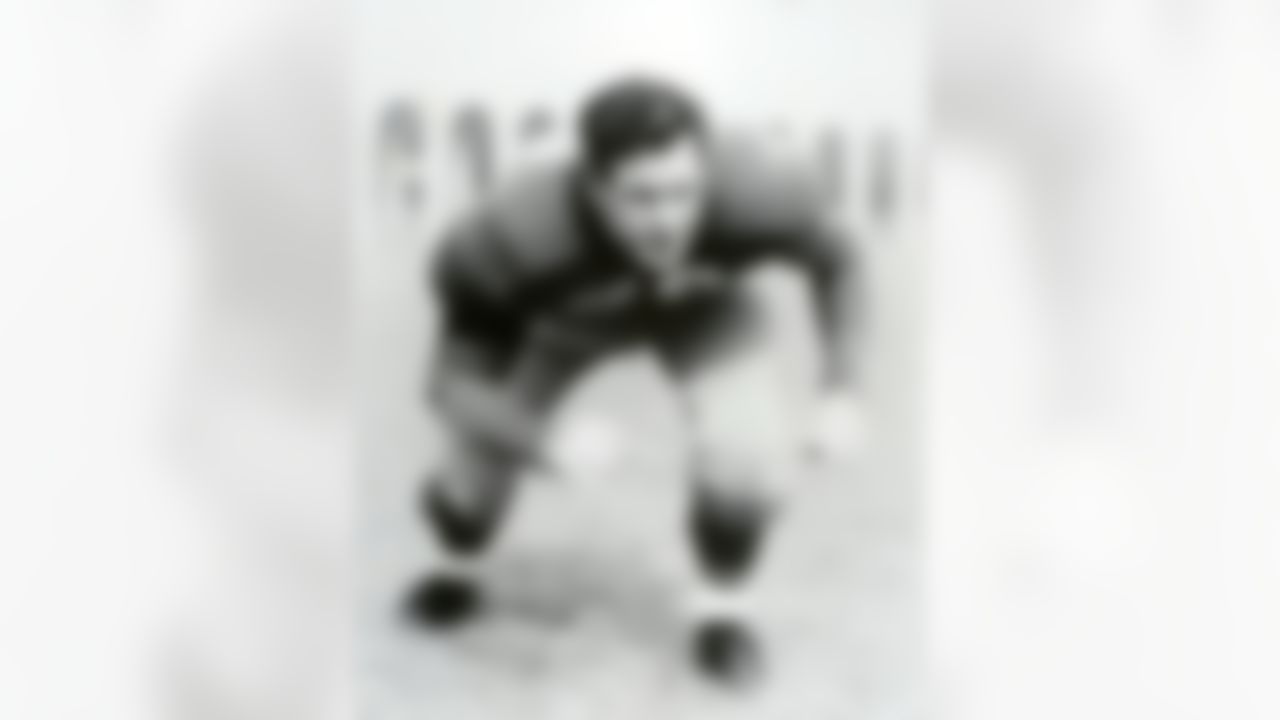
Vic Sears played offensive guard/tackle for the Eagles from 11941-1953, playing with the team during its two NFL Championship titles in 1948-49. He was a 1st Team All-Pro selection in 1943 and 1949 and was selected by various wire services to 1st or 2nd Team All-NFL in five different seasons. (Photo by Pro Football Hall of Fame)
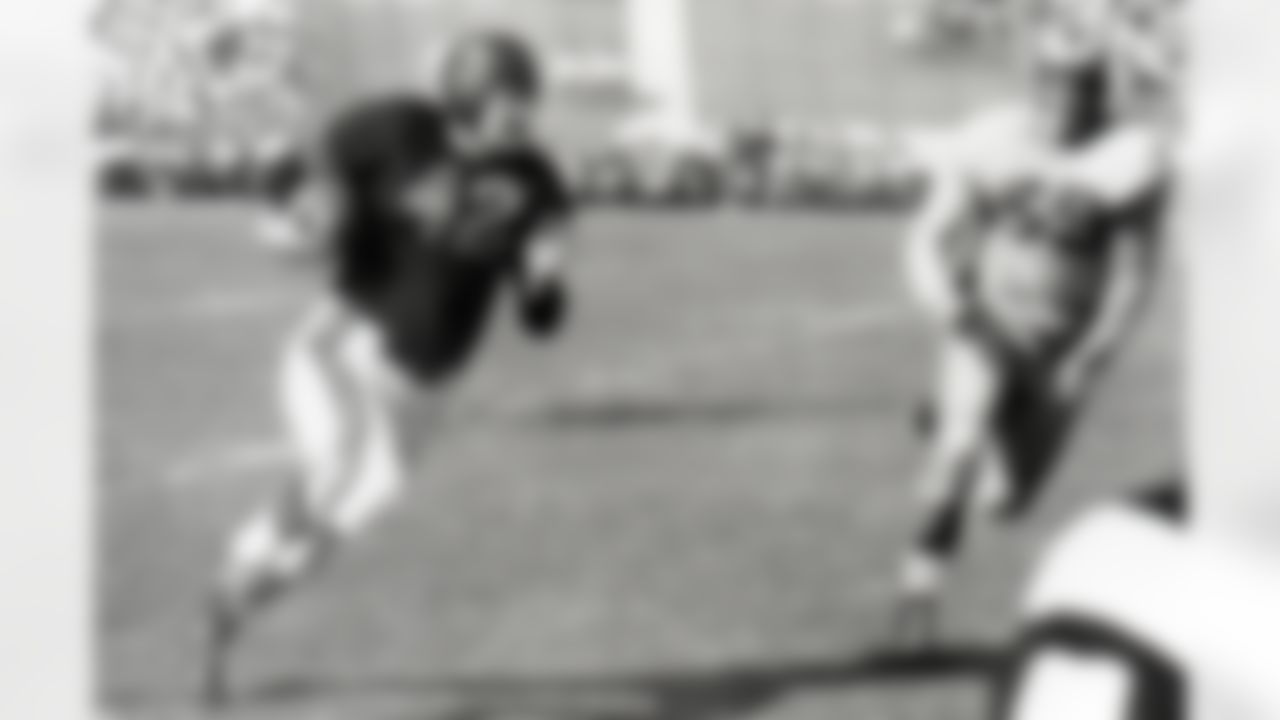
Quarterback Sid Luckman #42 of the Chicago Bears runs past end Tom Fears #55 of the Los Angeles Rams during a game played on November 7, 1948 at the Los Angeles Coliseum. Luckman, in his 12 seasons with the Chicago Bears, became the first successful T-formation quarterback. The 1940 NFL title game, which saw the Bears defeat the Washington Redskins, 73-0, showcased the explosive possibilities of the T attack. Almost immediately, many other pro teams began to adopt the new formation. Luckman was named first- or second-team all-league from 1940 through 1948 and won league MVP honors in 1943. (Photo by Vic Stein /NFL Photos)

Ed Sprinkle, lineman and defensive end for the Chicago Bears from 1944-1955, was known to many as "The Meanest Man in Pro Football" and was nicknamed "The Claw." He was selected to four Pro Bowls, playing with the team during their four Championship seasons in the 40's and led the defense in the 50's as they earned the moniker "Monsters of the Midway." (Photo by Pro Football Hall of Fame)
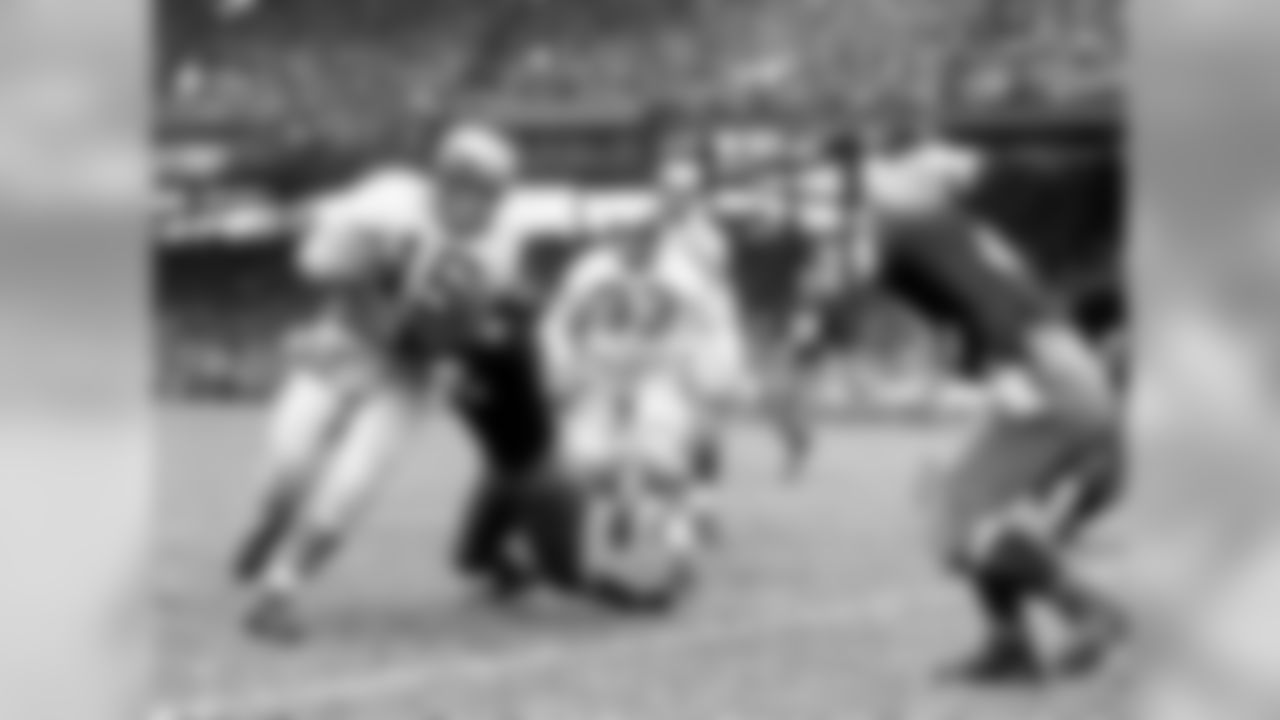
Philadelphia Eagles Hall of Fame Steve Van Buren (15) on a carry in a game against the Washington Redskins circa 1940s at Griffith Stadium in Washington, D.C. Van Buren surpassed 1,000 yards rushing twice, won four NFL rushing titles and a rare "triple crown" in 1945 when he led in rushing, scoring, and kickoff returns. He was a first-team All-NFL selection each of his first six seasons. Van Buren lined up as a halfback but played more like a fullback as the battering ram of a powerful Eagles squad that dominated the NFL in the late 1940s.(Photo by Pro Football Hall Of Fame/NFL)
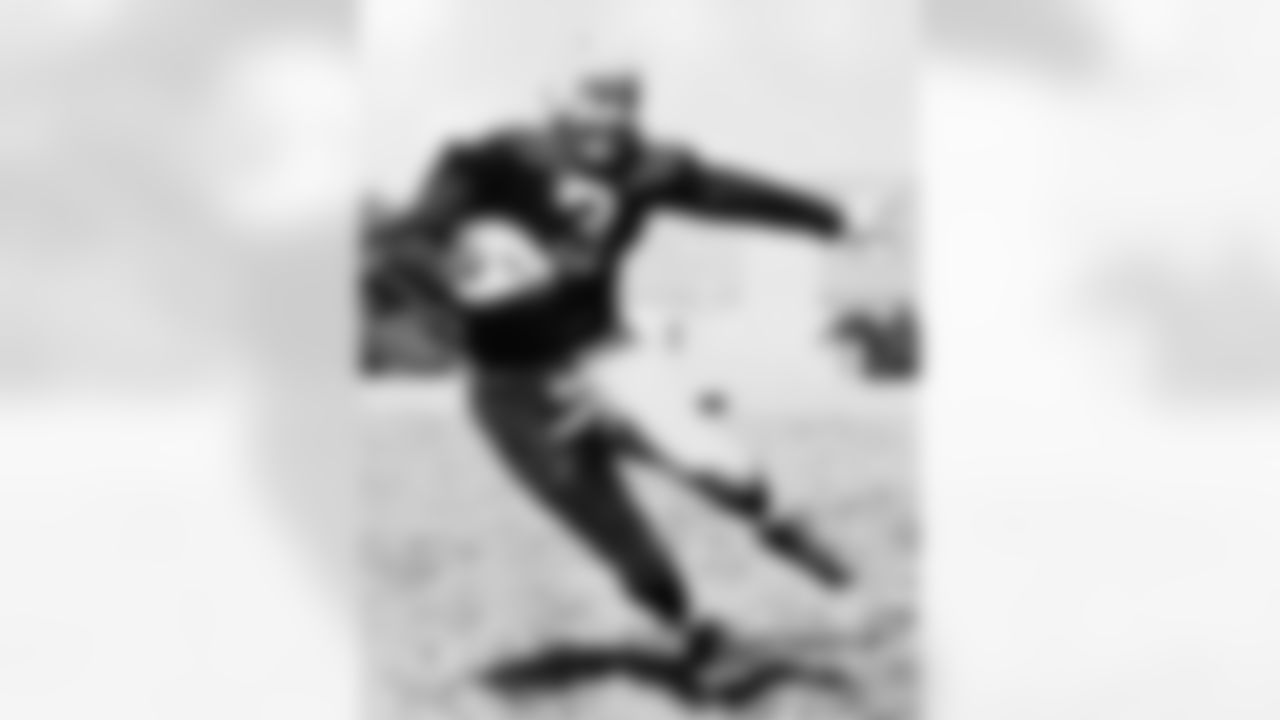
Hall of Fame running back Tony Canadeo of the Green Bay Packers. Canadeo played offense and defense, ran with the ball, threw passes, caught passes, returned punts and kickoffs, punted and intercepted passes. In 11 years, he rushed for 4,197 yards, passed for 1,642 yards, recorded 69 receptions for 579 yards, gained 513 yards on punt returns, 1,736 on kickoff returns, and scored 186 points. Altogether the versatile Canadeo gained 8,667 multi-purpose yards, accounting for almost 75 yards in each of the 116 games he played. Add to that, he also intercepted 9 passes and punted 45 times during his remarkable career. (Photo by NFL/NFL)
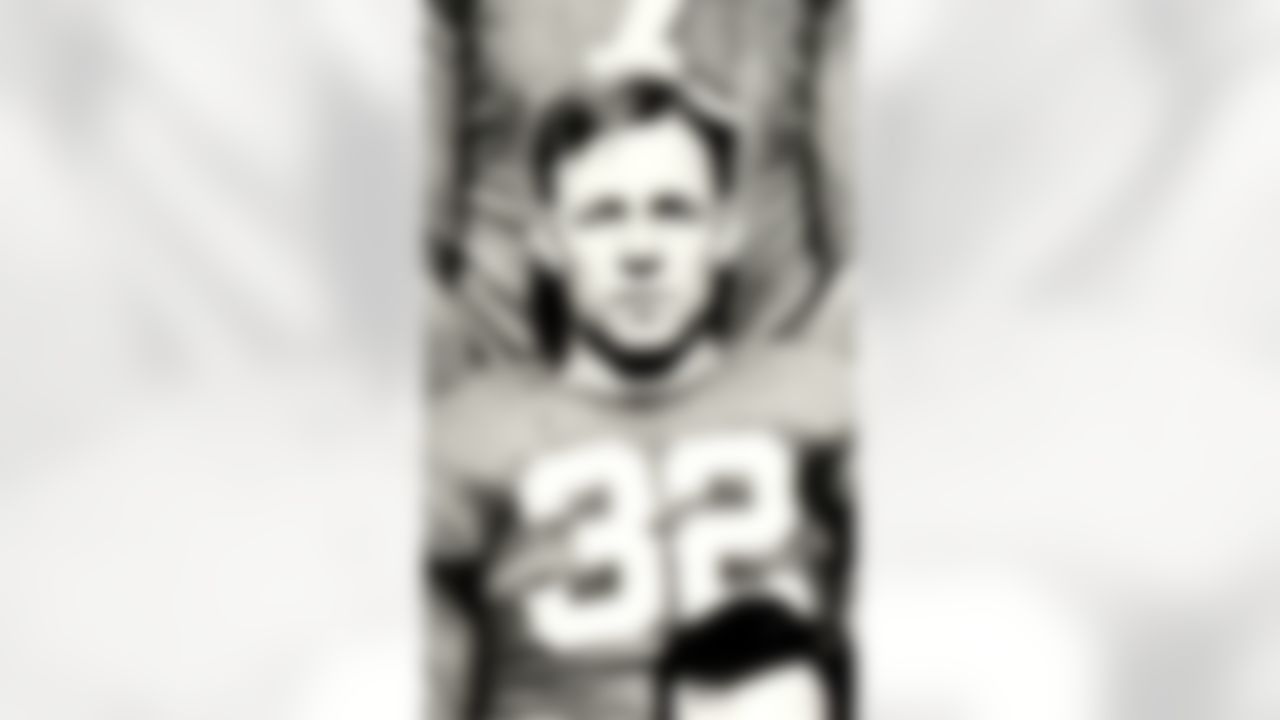
Len Younce was selected in the 8th round (67th overall) by the New York Giants in the 1941 NFL Draft, and played a variety of positions, including linebacker, offensive lineman, kicker, and punter. He was inducted into the Hall of Fame for his alma mater, Oregon State, in 1988. (Photo by Pro Football Hall of Fame)



